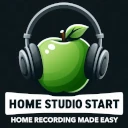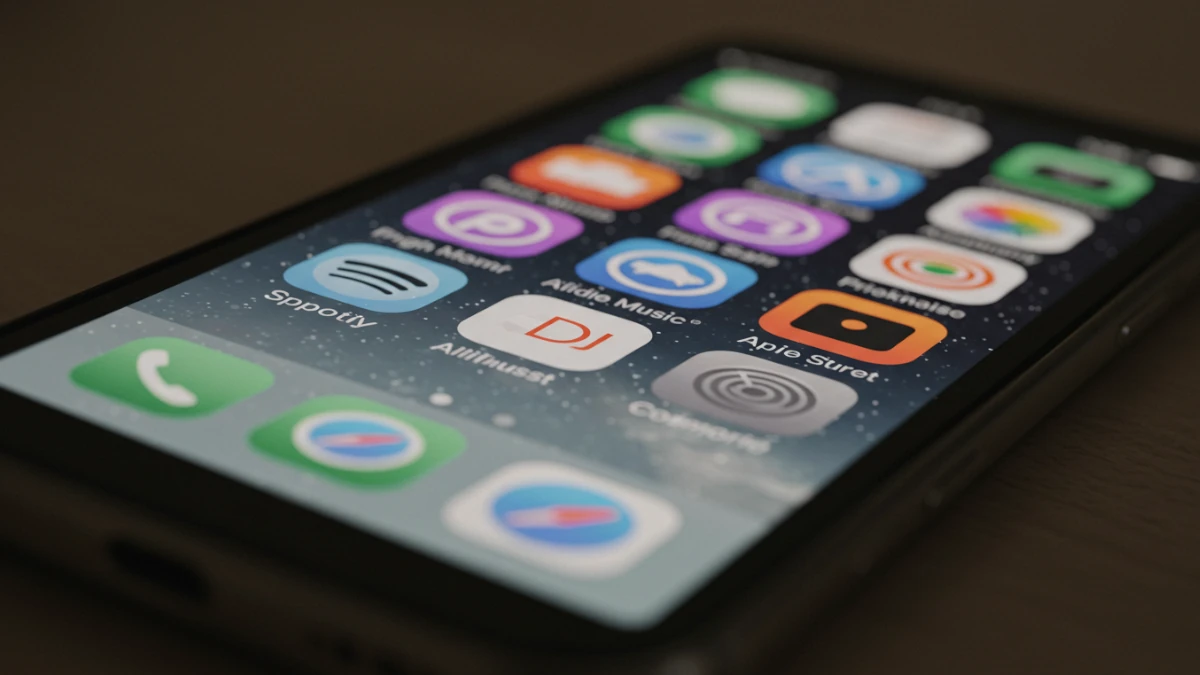HSS Podcast - How to Get Your Music on Spotify and Apple Music - A Deep Dive
HSS Staff
Imagine this: your song starts playing in a bustling café, and heads begin to bop. Someone pauses their conversation to say, “Who’s this? I’ve got to add this to my playlist!” That moment might feel like a distant dream, but with platforms like Spotify and Apple Music, it’s more reachable than ever. These services have rippled through the music world, transforming bedroom producers into household names almost overnight. So, if you’re an aspiring musician itching to share your work with the masses, you are in the right place. Dive into this guide to discover how to showcase your talent to the world in a few simple steps!
1. Understanding Digital Distribution Services
Getting your music on platforms like Spotify and Apple Music might seem daunting at first, but it all starts with understanding digital distribution services. These services act as the bridge between your music and the vast realm of streaming platforms, ensuring your tracks are available to listeners worldwide.
What are Digital Distribution Services?
Digital distribution services are companies that help you get your music onto streaming platforms without needing to sign with a record label. Think of them as your music’s gateway to the digital world. Companies like TuneCore, CD Baby, and DistroKid are popular choices, each offering varied perks and pricing models.
How Do They Work?
Once you’ve created your music, you’ll upload your tracks to your chosen digital distributor. These services handle the technical aspects, ensuring your music files meet the requirements of platforms like Spotify and Apple Music. In addition, they manage metadata, which includes song titles, artist names, and track numbers, essential for accurately representing your music online.
Practical Tips
When selecting a service, consider factors such as cost, ease of use, and extra features. For instance, DistroKid offers unlimited uploads for a flat yearly fee, making it ideal for prolific artists. On the other hand, CD Baby charges per release but provides comprehensive support, including sync licensing opportunities and physical album distribution.
Choosing the right distributor can significantly impact your music’s reach. Take the time to compare options, read reviews, and perhaps even test a couple of services to find the best fit for your needs. Remember, the key to successful digital distribution is finding a partner that aligns with your creative goals and budget.
2. Preparing Your Music for Release
Getting your music on Spotify and Apple Music is an exhilarating journey, but before your tracks can grace these platforms, meticulous preparation is crucial. Let’s dive into how you can prepare your music effectively for release.
Ensure High-Quality Audio
First and foremost, the quality of your audio needs to be top-notch. Streaming platforms like Spotify and Apple Music are known for their quality standards. Aim for at least a 16-bit, 44.1 kHz WAV file. This ensures your listeners experience the full richness of your music. For example, artists like Billie Eilish meticulously mix and master tracks to maintain audio integrity.
Metadata Matters
Next, focus on your metadata. Metadata includes essential information like the song title, artist name, and album title. Accurate metadata is crucial for proper indexing and searchability. Picture it as the digital ID of your song. Missteps here can lead to confusion or even misattribution. An organized spreadsheet can help you manage this critical data efficiently.
Create Compelling Album Artwork

Visuals are powerful. Your album artwork is the first thing listeners see, so make it compelling. Think of iconic album covers like Pink Floyd’s “The Dark Side of the Moon.” The artwork should resonate with the theme of your music and be formatted correctly (3000×3000 pixels is a standard size). Tools like Canva can help you craft professional-looking designs without needing a graphic designer.
Establish a Release Timeline
Finally, establish a release timeline. Deciding on a release date, planning promotions, and even submitting your music to curated playlists all fall under this. Artists often benefit from a pre-release strategy to build anticipation. For instance, Taylor Swift often teases singles before dropping an album, creating buzz and ensuring a successful launch.
By focusing on these facets, you’ll lay a strong foundation for your music’s journey to streaming platforms. This groundwork ensures your art is not only heard but celebrated.
3. Navigating the Submission Process
Once your music is polished to perfection, it’s time to embark on the submission journey to Spotify and Apple Music. This stage can be daunting, but with the right approach and tools, you’ll find it a breeze.
Choose a Reliable Distributor
Your first task is selecting a distributor, as Spotify and Apple Music don’t accept direct submissions from independent artists. Companies like DistroKid, TuneCore, and CD Baby act as intermediaries, ensuring your tracks reach these platforms. For instance, DistroKid is renowned for its user-friendly interface and speedy delivery times, making it a favorite among indie artists. TuneCore, known for its detailed analytics, might be your go-to if you wish to track your music’s performance closely.
Understand the Requirements
Each distributor has specific guidelines and requirements for submissions. Typically, you’ll need high-quality audio files, album artwork, and accurate metadata. Remember that the artwork should be 3000×3000 pixels and in JPEG format. Metadata, which includes song titles, artist names, and credits, must be meticulously accurate to avoid potential issues during the submission process.
Plan Your Release Schedule
Timing is crucial when releasing music. Consider setting a release date at least four weeks in advance. This buffer allows platforms like Spotify to potentially feature your music in their curated playlists, which can significantly boost your visibility. For example, if you plan to launch a summer anthem, aim for late spring to maximize its reach during the peak season.
Monitor and Follow Up
After submission, ensure you keep track of your music’s status. Most distributors offer a dashboard to monitor the progress of your release. If any issues arise, promptly contact their support teams. Being proactive helps iron out any kinks before your music goes live, ensuring a smooth launch.
By approaching this process with a strategic mindset and attention to detail, you’ll navigate the submission process like a pro, paving the way for your music to shine on Spotify and Apple Music.
4. Marketing Your Music on Streaming Platforms
Releasing your music on Spotify and Apple Music is just the beginning. To make your songs stand out, an effective marketing strategy is essential. Let’s dive into some practical tips and examples to help you maximize your reach and engagement on these platforms.
Build a Compelling Artist Profile
First impressions matter! Create an engaging artist profile on both Spotify and Apple Music. Use high-quality images and write a captivating bio that tells your story. Consider including unique details about your musical journey, influences, and what listeners can expect from your music. For instance, artist profiles like Billie Eilish showcase her unique style and musical ethos, attracting fans who resonate with her vibe.
Create Playlists and Collaborate
Playlists are powerful tools for exposure. Curate your own playlists that include your tracks as well as songs from artists you admire. This not only showcases your musical taste but also helps you connect with fans of similar music. Additionally, collaborate with other artists to feature on each other’s playlists. This cross-promotion could introduce your music to new audiences. For example, indie artists often create “Artist Friends” playlists, which helps them tap into each other’s fan base.
Leverage Social Media and Content
Social media is your best friend when it comes to promoting music. Share snippets of your songs, behind-the-scenes content, and personal stories about your music-making process. Use platforms like Instagram, TikTok, and Twitter to create buzz around your releases. For instance, artists like Lil Nas X have used TikTok challenges to make their tracks go viral. Encourage fans to share your music and create their own content around it, expanding your reach organically.
By utilizing these marketing strategies, you can enhance your presence on Spotify and Apple Music, connecting with a broader audience and achieving your musical goals.
5. Analyzing Performance and Maximizing Exposure
Getting your music on Spotify and Apple Music is just the beginning. To truly harness the power of these platforms, it’s essential to dive deep into analyzing performance and maximizing your music’s exposure. Understanding how your tracks are performing can guide your promotional strategies and help you reach a wider audience.
Utilizing Analytics Tools
Both Spotify and Apple Music offer robust analytics tools. Spotify for Artists provides insights into how many streams your songs are getting, where your listeners are located, and what playlists are driving traffic. Apple Music’s analytics platform offers similar features, allowing you to see which songs are performing best and in which regions.
For instance, if you notice a particular track is gaining traction in a specific country, you might consider targeting your marketing efforts there. You could engage with local influencers or run targeted ads to increase your presence in that market.
Engaging with Playlists
Playlists are a powerful way to boost your music’s visibility. Analyze which playlists your tracks are featured on, and identify similar playlists that might be interested in including your music. Reaching out to playlist curators can sometimes lead to additional placements, increasing your streams and exposure.
Learning from Performance Metrics
Keep an eye on which tracks are getting the most plays, skips, and saves. High skip rates might indicate that the intro of a song needs to be more engaging. On the other hand, high save rates suggest that listeners are connecting deeply with your music. Use this data to refine your future releases.
By continuously analyzing performance metrics, you’ll be better equipped to make informed decisions, ultimately maximizing your exposure on these platforms. Remember, the key is to remain adaptable and to use the data to inform your promotional strategies effectively.
Conclusion: Your Sonic Journey Begins Now!
All right, music maestros! By now, you’re armed with everything you need to navigate the bustling corridors of Spotify and Apple Music successfully. Let’s recap the essential steps to make sure you’re all set.
First, create awesome music. Nothing beats quality, so invest time in producing tracks that truly reflect your artistic vision. Then, focus on choosing the right music distributor. Distributors are your golden ticket, ensuring your music reaches streaming platforms efficiently. Remember to research, ask around, and pick one that aligns with your goals and budget.
Next up, nail down your metadata and branding. Craft a compelling artist profile complete with high-quality images and engaging bios—this is your chance to shine! Meanwhile, consider the importance of engaging with your audience by curating playlists and hosting listening parties on social media to maintain an energetic buzz around your releases.
Monitoring and analyzing the data is another crucial step. Use the insights these platforms provide to understand your listeners’ habits and refine your marketing strategies accordingly. Don’t forget, consistent engagement can propel your music’s success, so keep the momentum going with regular updates and new releases.
Finally, establish a solid marketing and promotion plan. Social media is your best friend here—engage your audience with behind-the-scenes content, collaborations, and teasers to keep their interest spiking upwards.
So, what are you waiting for? Your tracks are meant to be heard by the world! Take these steps, execute them with zest and imagination, and watch your music soar through the Spotify and Apple Music universe. The stage is set, your audience is waiting—go and make your musical dreams a reality!
Ready, set, record! Start your journey right now by choosing a distributor and preparing your first upload. Share your experiences and join forces with fellow artists in the comments below. Let’s make some noise, together!

